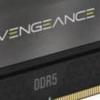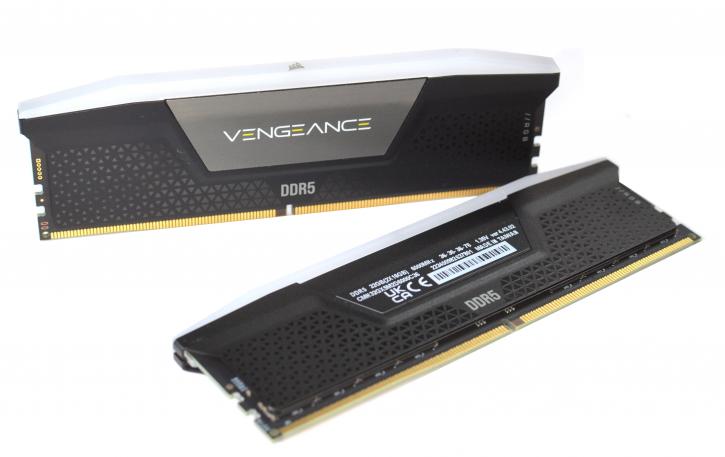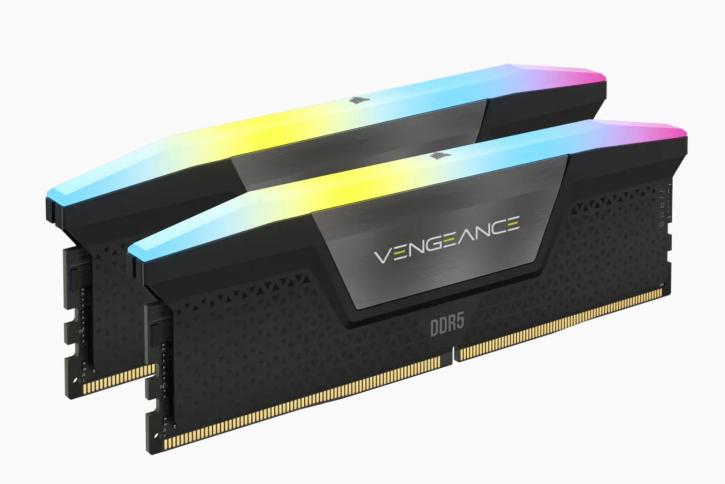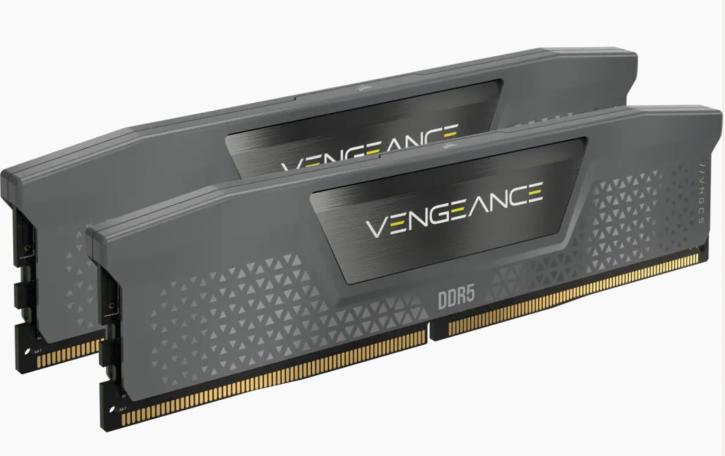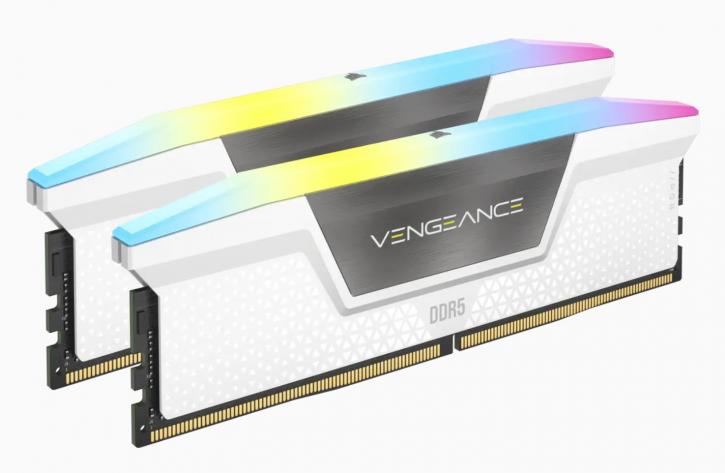Introduction
Corsair Vengeance RGB DDR5 6000 MHz CL36 32 GB (2x 16 GB)
In July, Corsair presented a new series of DDR5 memories: the Vengeance RGB DDR5. The available kits from the RGB edition have a frequency higher than the base 4800 MHz (5200-6600 MHz); the non-RGB version starts from 4800 MHz. We are checking the Corsair Vengeance RGB 6000 MHz CL36 DDR5 kit today. It's in the middle frequency in the series. We already had an opportunity (almost three years ago) to review the Vengeance (Pro) RGB series RAM, but it was for the DDR4; the frequency was 3200 MHz, and it received a "Top Pick" award, and also the Vengeance RGB Pro SL which had 3600 MHz frequency (with CL18) and got the "Approved" award. But let's focus back on the tested DDR5 kit.
A quick reminder - DDR5 is the newest technology to hit the market, make headlines, and break world records. DDR5 already set spectacular results in overclocking (of course using the LN2), as even 10550 MHz. DDR4 RAMs operate on a single 64-bit bus, while DDR5 has two 32-bit buses (plus, in both cases, an additional 8-bit for ECC). As a result, a single module is identified as Dual Channel, while two are identified as Quad Channel. However, the solution itself does not match the throughput of HEDT platforms with processors with a four-channel controller. The internal (A / B) channels of DDR5 RAM also share the RCD (Register Clock Driver), which provides more output signals and more extended pulse reading (8 vs. 16). The DDR5 comes with a Power Management Integrated Circuit (PMIC) from the most important things you need to know. It's responsible for controlling voltage changes, optimizing the energy draw, and making it less demanding for the motherboard controller. The DDR4 nominal voltage is 1.2 V; for the DDR5, it's 1.1 V. Typical XMP voltage for the older type of memory is 1.35V (sometimes 1.45 V); now, it's mostly 1.25 V. Speaking of the XMP, till now, it was 2.0 revision, with the introduction of the DDR5 we've got the rev 3.0. The main difference is that the number of profiles has increased from three to five (three for the manufacturer settings and two placeholders for the users).
After this short introduction – let's present a bit of the review sample. It's coming from the RGB lineup (there's also a non-RGB variant which you can see below):
There are two color variants:
- Black (which we got)
- White (you can see it below)
Our sample is not the highest frequency kit from the Vengeance RGB series, with a 6000 MHz clock, CL36-36-36-76, at 1.35. Corsair also has the following kits:
|
Frequency |
CAS Latency |
Voltage |
|
5200MHz |
CL40-40-40-77 |
1.25V |
|
5600 MHz |
CL40-40-40-77 |
1.25V |
|
5600 MHz |
CL36-36-36-76 |
1.25V |
|
6000 MHz |
CL40-40-40-77 |
1.35V |
|
6200 MHz |
CL36-39-39-76 |
1.3V |
|
6400 MHz |
CL38-40-40-84 |
1.35V |
|
6600 MHz |
CL32-39-39-76 |
1.4V |
The height of the memory module is 45 mm, so it's a relatively low-profile form, which should cause fewer problems with the (air) CPU coolers. As for the compatibility – there's a Z690 chipset given. For the AMD AM5 platform, the following kits are available:
|
Frequency |
CAS Latency |
Voltage |
|
5200MHz |
CL40-40-40-77 |
1.25V |
|
5600 MHz |
CL36-36-36-76 |
1.25V |
|
6000 MHz |
CL30-36-36-76 |
1.4V |
The top of the VENGEANCE RGB RGB DDR5 heatsink is covered with a lighting bar. The series is equipped with RGB, so the LED enjoyers should be happy (still – there's a variant without the lighting). We'll check the kit only on one platform, with Z690-based motherboards (Asus Z690 Maximus Apex) combined with the Intel Core i9 12900K. We are traditionally going to try and squeeze something more out of it, so the standard 6000 MHz probably is not the last word here (or at least we might manage to fine-tune the latencies). You can always stay on the safe side and stick to the advertised frequency and latencies using XMP 3.0. The default parameters look great, and so are the visual aspects – we need to check the performance then. A limited lifetime warranty backs the Vengeance RGB series. The MSRP is 244.99 USD. Ok, next page, please.
